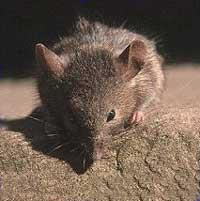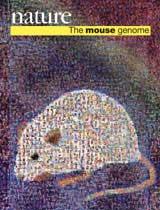Mouse genome
Gradually, scientists are carrying out complete genome sequencing projects. The most striking thing was man, but other beings have also received the attention of biochemists. This time he plays the house mouse ( Mus musculus). To achieve this goal, an international consortium was established that announced that its work would end in 2003, but that it has already published its results.

The domestic mouse has participated in numerous studies. For this they have grown in a very controlled environment and, like chemical compounds and laboratory equipment, can be purchased by catalog. Specifically, the genome of the C57BL/6J family mouse has been decoded. Mice of this variety are widely used in laboratories. All mice in this line are from the hand of Abbie Lathrop. They come from those who grew up in the early twentieth century.
Therefore, the mouse genome is important in biomedical research, as it is a widely used animal in laboratories. In many of these investigations scientists cause mutations in the mouse, so it is very useful to know in advance what is in each area.
The man and the mouse
Biochemicals have compared to the human genome and have drawn many conclusions. For example, as in the case of man, they have found fewer genes than they expected: a total of 30,000 genes, of which 96% were found in the human genome.
There are differences, for example, related to the sensory system: The four gene subfamilies of cytochrome P450 are much wider than those of man. Another example is the APOAV gene, which encodes a protein involved in lipid metabolism. Although this field is well studied, the mouse genome has brought experts a new material to expand research.

Although more and more genomes are being decoded, the most sequenced mammals are still scarce. Therefore, the mouse is important as it has brought a new study on this path. The mouse decoding project is also underway, the first results are available on the internet. This line of research is of great importance, since the rat is larger than the mouse, so it has been considered as a model of the organism in many studies.
Priorities
However, when a genome is said to have been sequenced, it is not understood that it has been fully achieved. The last steps are very complicated, so there are few small gaps to complete them. In this situation are, among others, the genomes of man, mouse and mouse. However, in cases where most of the work has been done, laboratories implement other projects based on prioritization criteria.
However, not all scientists agree to decide which is the best criterion. For some, chicken, chimpanzee and bee on the one hand, and mushrooms, sea urchin and thermophila Tetrahymena on the other. For other experts the main objective should be the cow and the dog.
However, despite the great step that has been taken with the mouse, there are many creatures that are missing to get an overview of the genomes. In addition, with the decoded it is necessary to make a great effort to understand the proteomics of these genomes.
Buletina
Bidali zure helbide elektronikoa eta jaso asteroko buletina zure sarrera-ontzian











